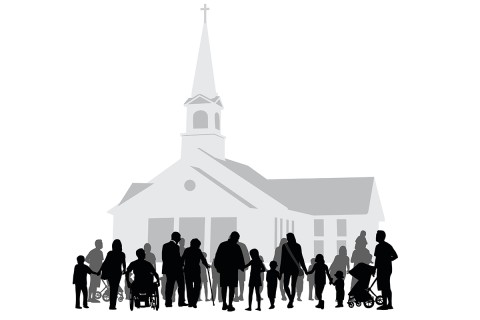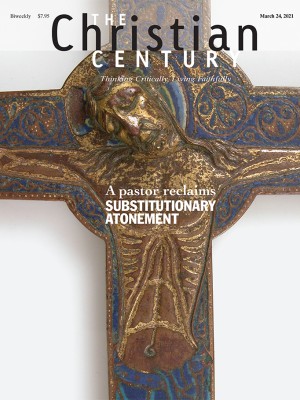Six predictions for the post-pandemic church
It won’t look the same, but there’s potential for renewal.

As COVID infection rates decline and vaccination rates increase, we can envision the pandemic eventually coming to an end. Given that growing hope, it’s a good time to look at what the post-pandemic church might resemble. Here are some predictions.
First, the social and spiritual capital connected with congregational life will be increasingly valuable in a post-pandemic culture. A church’s ministry will need to be spirited and compelling, of course, especially if it’s to compete with the convenience of worship at home in pajamas. But as social gathering places (at least ones where people can meet without paying) get put on the endangered species list and remote work opportunities cocoon more and more people, as anchoring institutions of society move their activities online and plenty of us shift our purchasing, learning, and even medical care to the internet, the gathered church becomes an ever more precious entity.
Read our latest issue or browse back issues.
Thirst will increase for authentic community where moral formation and relationships of meaning can prosper. In social isolation, we have learned the truth of Frederick Buechner’s words: “You can survive on your own; you can grow strong on your own; you can prevail on your own; but you cannot become human on your own.” Congregations will play a heightened role in providing thick human community.
Second, worship during the pandemic has taught us that churches can be liberated from a fixation on counting. Church leaders have worked feverishly over the last year to try to calculate their church rolls and virtual attendance figures. But faith at its center is a transcendent mystery that refuses to be measured. Numbers depersonalize. If denominations and congregations can catch the spirit, there’s refreshing new freedom to be found in leaving religious bean counting behind.
Third, the ability to conduct worthwhile ministry online throughout the pandemic has upended some of our obsessiveness over our church buildings. We’ve learned to live rich lives of faith independent of them. By the same token, we’ve also seen scores of people moved to tears just reentering sacred spaces that have shaped their spiritual and emotional being. Our extended experience with virtual church may allow us to appreciate our buildings as hubs for mission without idolizing them—a healthy reset.
Fourth, there is some outsize work ahead for pastoring in an age of conspiracy and disinformation. We’re seeing “a kind of moral freak show unfolding,” says Peter Wehner, as lies penetrate our national psyche and a common sense of reality fades beneath the blurring of fact with fiction. But at least we know what we’re up against. Churches can be committed to speaking the truth, displaying constancy, addressing paranoia, denouncing cults, and elevating the gospel above every nefarious claim that demonizes others or sows chaos.
Fifth, many churches have expanded their virtual reach in innovative ways and enlarged their social media presence. This is exciting. But we shouldn’t forget that the church stands or falls with the doctrine of the incarnation. “Jesus drew near to them,” scripture reports. Intimacy, proximity, and personal presence will carry more genuine authority in a post-pandemic church than touting a large platform.
Finally, the long pandemic gap should have congregations eager to address racial inequity, unconscious bias, and the everyday experiences of Black Americans. The creative joy of face-to-face conversation will be to get as many people around the table as possible thinking spiritually, confessionally, and enthusiastically about what the prophets and Jesus offer us in this journey of humility and reckoning.
A version of this article appears in the print edition under the title “The post-pandemic church.”







